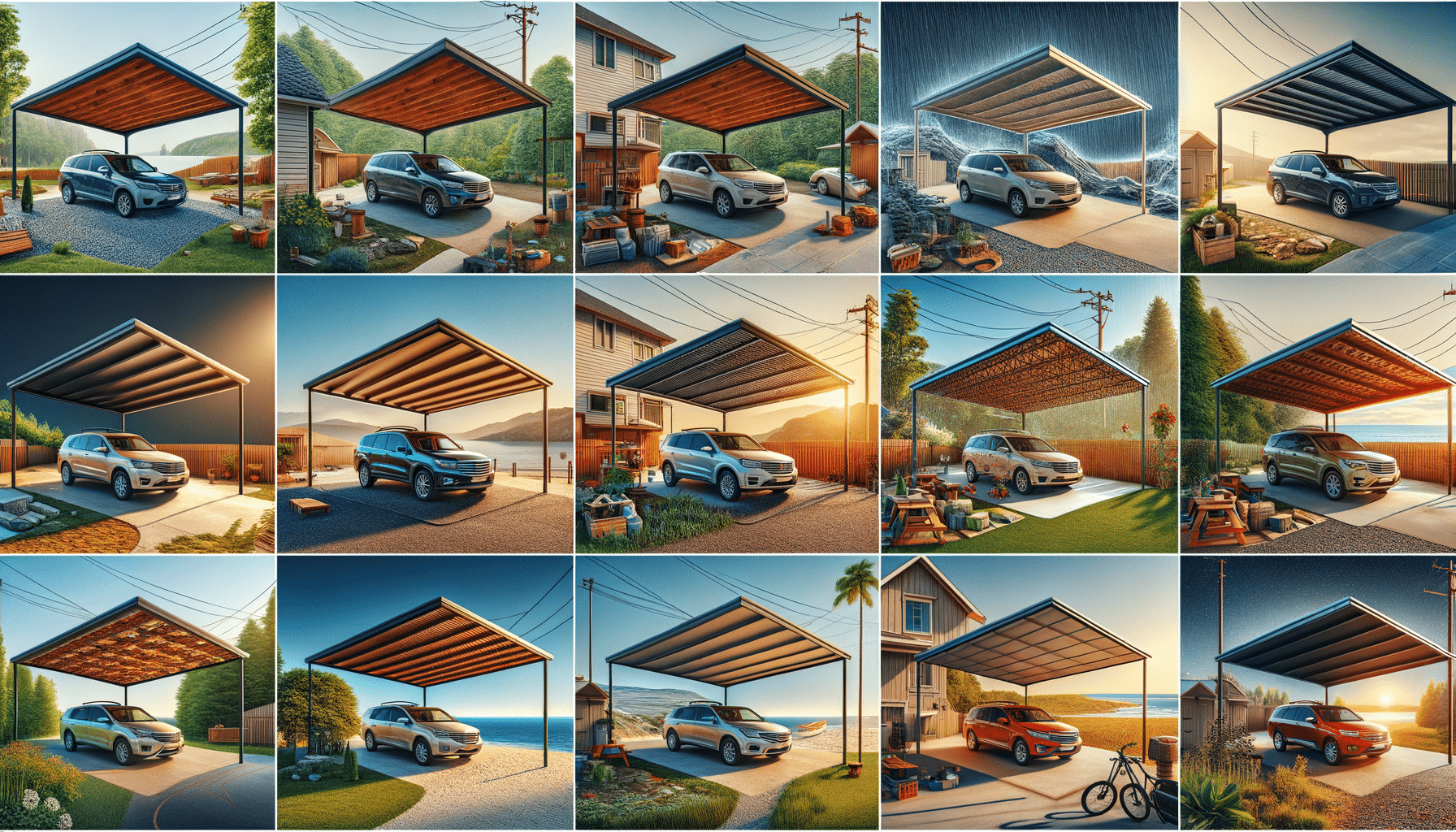
Exploring the Versatility and Benefits of Carports
Understanding Carports: A Practical Overview
Carports serve as a versatile and efficient solution for vehicle protection, offering a practical alternative to traditional garages. Unlike enclosed garages, carports are typically open structures that provide shelter for vehicles, shielding them from elements such as rain, snow, and sunlight. This type of structure is especially beneficial in areas prone to harsh weather conditions, ensuring that vehicles remain in good condition over time.
The design of carports can vary significantly, ranging from simple metal frames with a roof to more elaborate constructions featuring additional storage space or integrated solar panels. The flexibility in design allows homeowners to choose a carport that best suits their aesthetic preferences and functional needs.
One of the key advantages of carports is their cost-effectiveness. Compared to building a full garage, a carport requires significantly less investment in terms of both time and money. This makes them an attractive option for budget-conscious individuals looking to protect their vehicles without incurring the high costs associated with garage construction.
Furthermore, carports can be installed relatively quickly and with minimal disruption to the existing landscape, making them a convenient choice for homeowners seeking a straightforward solution to vehicle storage.
Materials and Design Options for Carports
When it comes to selecting a carport, the choice of materials plays a crucial role in determining the structure’s durability and appearance. Common materials used in carport construction include steel, aluminum, wood, and polycarbonate. Each material offers distinct advantages and can be chosen based on specific requirements and environmental considerations.
Steel carports are renowned for their strength and resilience, making them ideal for areas with heavy snow or strong winds. Aluminum, on the other hand, is lightweight and resistant to rust, making it a popular choice for coastal regions. Wooden carports provide a classic and natural aesthetic, blending seamlessly with garden landscapes, though they may require more maintenance to prevent weather damage.
Polycarbonate carports offer a modern design with translucent roofing, allowing natural light to filter through while still providing protection from UV rays. This material is particularly suited for those who wish to maintain a bright and open atmosphere around their vehicle storage area.
In terms of design, carports can be customized to match the architectural style of the home. From simple, single-vehicle structures to expansive multi-car units, the possibilities are virtually endless. Some carports even incorporate additional features such as storage rooms or integrated solar panels, enhancing their functionality and energy efficiency.
Benefits of Installing a Carport
The installation of a carport offers numerous benefits beyond mere vehicle protection. One of the primary advantages is the added convenience it provides. With a carport, homeowners can enjoy easy access to their vehicles without the need to open and close garage doors, which can be particularly useful during inclement weather.
Carports also contribute to increased property value, as they offer an appealing and functional addition to any home. Potential buyers often view carports as a desirable feature, recognizing the practical benefits they provide. Additionally, carports can be used for more than just vehicle storage; they can serve as versatile outdoor spaces for gatherings, workshops, or even as a shaded play area for children.
Another significant benefit of carports is their environmental impact. By opting for a carport over a fully enclosed garage, homeowners can reduce their carbon footprint. The open design of carports requires fewer materials and less energy to construct, making them a more sustainable choice.
Furthermore, carports with integrated solar panels can generate renewable energy, further enhancing their eco-friendly credentials. This energy can be used to power household appliances or charge electric vehicles, offering both environmental and financial benefits.
Comparing Carports and Garages
When considering vehicle storage options, homeowners often weigh the pros and cons of carports versus garages. While both serve the primary function of protecting vehicles, there are distinct differences that may influence the decision-making process.
Garages offer complete enclosure, providing security and protection from all weather conditions. They can also serve as additional storage or workspace, offering more versatility in terms of use. However, garages require a larger initial investment and take longer to construct, which may not be feasible for all homeowners.
In contrast, carports offer a more affordable and flexible solution. They are easier to install and can be adapted to fit various spaces and needs. While they may not provide the same level of security as a garage, carports still offer substantial protection against the elements, ensuring vehicles remain in good condition.
Ultimately, the choice between a carport and a garage will depend on individual preferences, budget constraints, and specific requirements. For those seeking a cost-effective and convenient solution, carports present a compelling option that balances functionality with affordability.
Choosing the Right Carport for Your Home
Selecting the ideal carport for your home involves careful consideration of several factors, including location, climate, and personal preferences. To begin with, assess the available space and determine the size of the carport needed to accommodate your vehicles comfortably.
Consider the climate in your area when choosing materials for your carport. For example, if you live in a region with frequent snowfall or strong winds, opting for a sturdy steel carport may be the most suitable choice. Alternatively, if you reside near the coast, an aluminum carport with rust-resistant properties would be advantageous.
Personal preferences in terms of design and aesthetics also play a significant role in the selection process. Ensure that the carport complements the architectural style of your home and enhances its overall appearance. Customization options such as color, roofing style, and additional features can be tailored to meet your specific needs.
Finally, consider the long-term benefits and maintenance requirements of the carport. Choose a structure that offers durability and requires minimal upkeep, ensuring that it remains a valuable addition to your property for years to come.
By taking these factors into account, you can confidently select a carport that meets your needs and enhances your home’s functionality and appeal.

